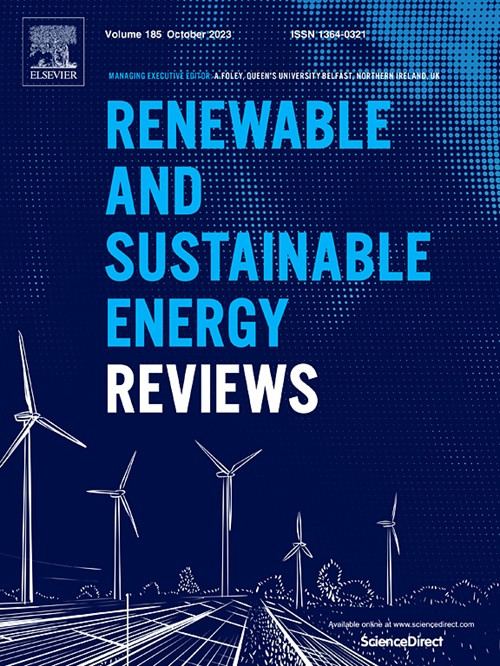基于参数化生命周期评价的汽车使用阶段能耗分析模型的建立
IF 16.3
1区 工程技术
Q1 ENERGY & FUELS
引用次数: 0
摘要
汽车能耗计算模型往往缺乏适应性、粒度和一致性,限制了生命周期评估(LCA)中汽车过程的透明度、可重复性和代表性。虽然发展参数化模型似乎很有前景,但其在汽车能耗方面的应用受到动力系统建模的复杂性和驾驶条件集成的限制。这项工作提出了一个基于参数化方程的汽油和电动汽车模型,描述了能源需求的物理驱动因素,同时解耦了贡献者的作用,包括车身、动力总成、路径和驾驶员。介绍了一种创新的参数化驾驶条件的方法,消除了对传统驾驶循环的依赖。通过预先设置的配置来增强可用性,在此框架上构建的计算工具PETRAUL使从业者能够对车辆进行精确和具有代表性的能耗计算。本研究进一步证明了该工具在前景和背景LCA进程中的实用性。这包括强调多解决方案策略必要性的情景分析,与ecoinvent和calculator的比较,强调改进的粒度,以及轻量化的LCA案例研究,说明了在不同技术和区域条件下评估的增强代表性。这种聚碳酸酯玻璃的流线型LCA突出了从车辆使用阶段到轻质材料制造阶段的潜在负担,特别是当与电气化相结合时。最终,PETRAUL通过增强参数化建模的适应性和透明度,为推进LCA实践提供了坚实的基础,同时说明了减少汽车工业对环境影响的技术和清醒措施的必要性。本文章由计算机程序翻译,如有差异,请以英文原文为准。
Development of an analytical model of automobile energy consumption during use-phase for parametrized life cycle assessment
Models for automobile energy consumption calculations often lack adaptability, granularity, and consistency, limiting the transparency, reproducibility, and representativeness of automobile processes in Life Cycle Assessment (LCA). Although developing parametrized models appears to be promising, their application to automobile energy consumption is constrained by the complexity of powertrain modeling and the integration of driving conditions. This work presents a model for gasoline and electric vehicles based on parametrized equations, describing physical drivers of energy demand while uncoupling the role of contributors, including the vehicle body, powertrain, path, and driver. An innovative method for parametrizing driving conditions is introduced, eliminating reliance on traditional driving cycles. Complemented by pre-set configurations to enhance usability, the computational tool PETRAUL built on this framework enables practitioners to perform precise and representative energy consumption calculations for vehicles. This study further demonstrates the tool's utility for both foreground and background LCA processes. This includes scenario analyses emphasizing the necessity of multi-solution strategies, a comparison with ecoinvent and Carculator highlighting improved granularity, and an LCA case study on lightweighting, illustrating enhanced representativeness for assessments across diverse technological and regional conditions. This streamlined LCA of a polycarbonate glazing highlights the potential burden shifting from the vehicle use phase to the manufacturing of lightweight materials, notably when coupled with electrification. Ultimately, PETRAUL provides a robust foundation for advancing LCA practices by enhancing adaptability and transparency in parametrized modeling, while illustrating the need for both technological and sobriety measures to reduce environmental impacts of the automobile industry.
求助全文
通过发布文献求助,成功后即可免费获取论文全文。
去求助
来源期刊

Renewable and Sustainable Energy Reviews
工程技术-能源与燃料
CiteScore
31.20
自引率
5.70%
发文量
1055
审稿时长
62 days
期刊介绍:
The mission of Renewable and Sustainable Energy Reviews is to disseminate the most compelling and pertinent critical insights in renewable and sustainable energy, fostering collaboration among the research community, private sector, and policy and decision makers. The journal aims to exchange challenges, solutions, innovative concepts, and technologies, contributing to sustainable development, the transition to a low-carbon future, and the attainment of emissions targets outlined by the United Nations Framework Convention on Climate Change.
Renewable and Sustainable Energy Reviews publishes a diverse range of content, including review papers, original research, case studies, and analyses of new technologies, all featuring a substantial review component such as critique, comparison, or analysis. Introducing a distinctive paper type, Expert Insights, the journal presents commissioned mini-reviews authored by field leaders, addressing topics of significant interest. Case studies undergo consideration only if they showcase the work's applicability to other regions or contribute valuable insights to the broader field of renewable and sustainable energy. Notably, a bibliographic or literature review lacking critical analysis is deemed unsuitable for publication.
 求助内容:
求助内容: 应助结果提醒方式:
应助结果提醒方式:


